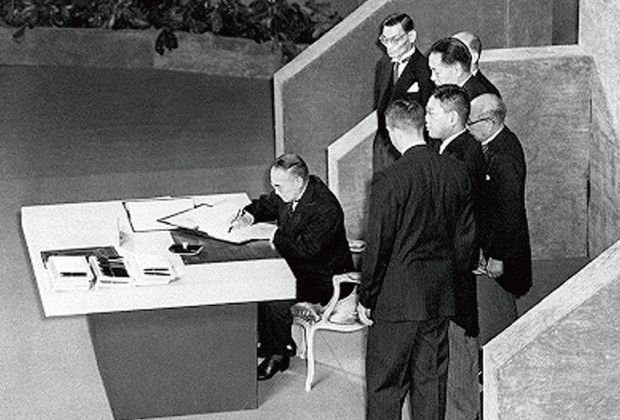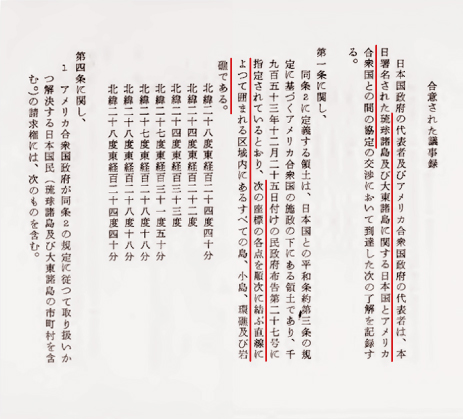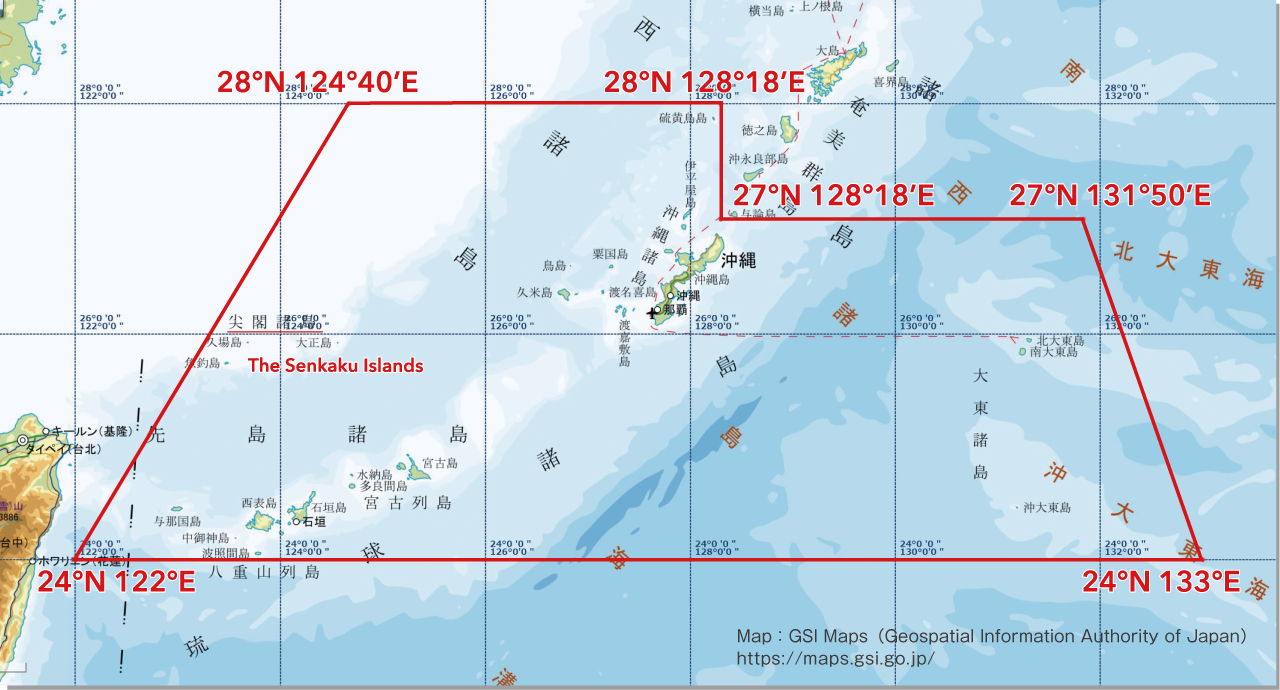The United States recognized the Senkaku Islands as part of Okinawa from the time of World War II. Under U.S. administration, the Senkaku Islands were placed under the jurisdiction of the Yaeyama Islands, and the same status was basically maintained as that from before the war.In April 1952, the San Francisco Peace Treaty entered into effect. Accordingly, Japan retained territorial sovereignty over Okinawa, including the Senkaku Islands, and the Ryukyu Islands were formally placed under administration by the United States as “Nansei Shoto south of 29° north latitude.”
Later, administration over Okinawa, including the Senkaku Islands, was returned to Japan under the Okinawa Reversion Agreement of May 15, 1972.
As such, the Senkaku Islands have consistently been treated as Japanese territory under the frameworks of the post-war order and international law.
USCAR Proclamation No. 27 (Geographical limit of the Ryukyu Islands)
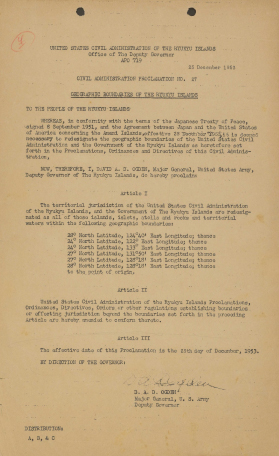 USCAR Office of The Deputy Governor
USCAR Office of The Deputy Governor
December 25, 1953 (Showa 28)
[Repository] Okinawa Prefectural Archives
Article 1 defines the geographic limitation of Ryukyu by latitude and longitude.
On December 25, 1953, the United States issued USCAR Proclamation No. 27, defining the geographic limitation of the Ryukyu Islands by latitude and longitude. The Senkaku islands are included in the scope designated in the proclamation.
San Francisco Peace Treaty
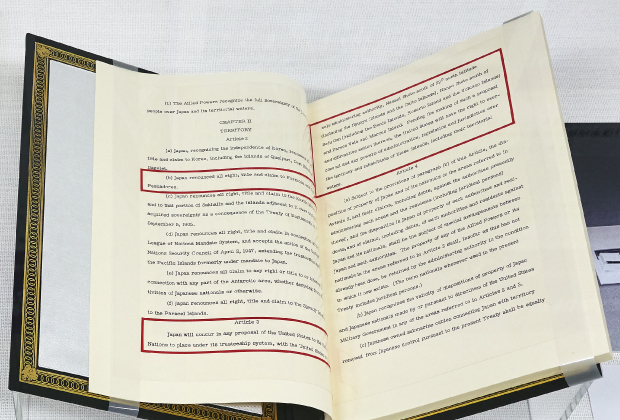
Chapter II Territory Article 3
Japan will concur in any proposal of the United States to the United Nations to place under its trusteeship system, with the United States as the sole administering authority, Nansei Shoto south of 29° north latitude (including the Ryukyu Islands and the Daito Islands), Nanpo Shoto south of Sofu Gan (including the Bonin Islands, Rosario Island and the Volcano Islands) and Parece Vela and Marcus Island. Pending the making of such a proposal and affirmative action thereon, the United States will have the right to exercise all and any powers of administration, legislation and jurisdiction over the territory and inhabitants of these islands, including their territorial waters.




